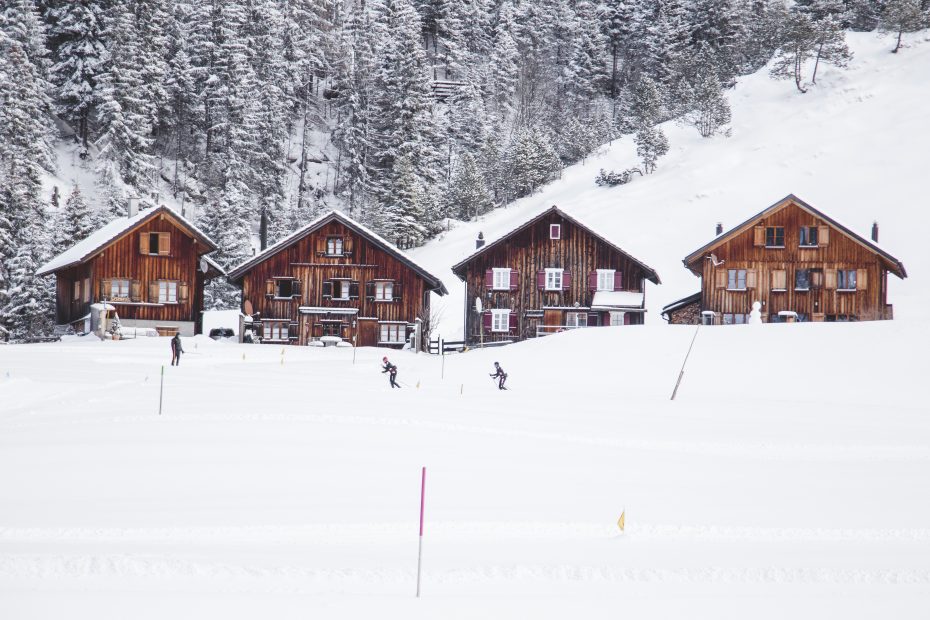Table of Contents
Introduction
Nestled between Switzerland and Austria, the tiny European country of Liechtenstein packs immense natural beauty into its small size. With majestic Alpine peaks, enchanting green valleys, shimmering lakes, and thundering waterfalls, Liechtenstein’s landscapes look like something straight out of a fairytale. Though it is one of Europe’s smallest countries, Liechtenstein holds some of the continent’s most spectacular scenery.
The Majestic Alps
The highlight of Liechtenstein’s scenery is its imposing Alpine backdrop. Over 70% of the country is covered by mountains, with the Rätikon mountain range forming a stunning border with Switzerland. The jagged Alpine peaks reach heights of nearly 10,000 feet, providing excellent hiking and mountaineering opportunities. Crisp mountain air, glistening snowfields, and panoramic vistas make the Alps of Liechtenstein an outdoor lover’s paradise. Visitors can take breathtaking hikes through alpine meadows dotted with wildflowers, or enjoy mountain biking and rock climbing. In winter, excellent skiing and snowboarding await at Malbun, the country’s sole ski resort.
Enchanting Valleys
In contrast to the lofty peaks, two lush green valleys slice through Liechtenstein. The Rhine Valley in the west is home to the capital city Vaduz and connected to Lake Constance. With its mild climate, vineyards, and historic castles, it provides an idyllic setting. In the south, the narrow Samina Valley winds between steep forested hillsides. Dotted with charming villages and dairy farms, it has an intimate, rural feel. Wandering through these valleys reveals rustic timber chalets, Medieval churches, babbling brooks, and a slower pace of life.
Spectacular Lakes
Liechtenstein boasts access to two stunning Alpine lakes. Lake Constance borders the country to the west, with the shoreline offering beaches, walking trails, and water sports. The smaller Gampriner See lies nestled within the Samina Valley, ringed by forested mountains. Its emerald waters reflect the surrounding scenery. Liechtenstein also has countless smaller tarns and streams cascading down from the Alps, perfect for fishing and summer swims.
Breathtaking Waterfalls
With abundant snowmelt and rainfall, Liechtenstein has impressive waterfalls to match its lofty peaks. The Vaduz Waterfall right in the capital plunges nearly 100 feet over black basalt cliffs into an Alpine gorge. Further south, the towering Seewis Waterfall crashes down into a crystal blue plunge pool. More hidden waterfalls await discovery along hiking trails, where you can experience the roar of tumbling waters up close.
Lush Forests and Rolling Hills
While the Alps dominate, Liechtenstein also holds stretches of gentle, rural countryside. The Rätikon mountain range in the west has lower foothills blanketed in mixed forests of beech, larch and pine. South of Vaduz, vineyards and orchards spread over green rolling hills. Alpine meadows dotted with wildflowers let you appreciate the mountain flora up close. The rural landscape provides a peaceful counterpoint to the drama of the peaks.
Historic Attractions
Beyond natural attractions, Liechtenstein has striking castles and postcard-perfect towns to explore. Perched on a hillside, the turreted Vaduz Castle looks straight out of a storybook. The ruins of medieval Gutenberg Castle sit atop a forested mountain with panoramic views. Picturesque villages like Triesenberg and Balzers still have historic wood and stone houses. Wandering down cobblestone lanes reveals ornamented churches and taverns filled with old-world charm.
Stunning Views
With its diversity of landscapes, Liechtenstein is a scenic wonderland. The mountain ridges and summit hikes let you soak up 360-degree Alpine vistas. Valley overlooks like the Three Sisters observation point reveal the valleys and vineyards unfurling below. The vast Lake Constance has shimmering waters framed by distant peaks. Every bend in the road guarantees a new jaw-dropping view, so have your camera ready!
Outdoor Adventures
Outdoorsy visitors will find endless adventures in Liechtenstein’s natural playground. Hundreds of miles of hiking trails cater to every ability level. Cyclists and mountain bikers can cruise along scenic routes. Climbers challenge themselves on sheer cliff faces and boulders. Adrenaline junkies try canyoning and whitewater rafting on alpine rivers. In winter, downhill and cross-country skiing options abound. More unique attractions like the spectacular gorge at Hinterthal also impress visitors.
Local Culture and Cuisine
Beyond the landscapes, Liechtenstein’s charm shines through in its local traditions. Quaint villages have ornate churches, taverns, and houses with decorative painted facades. Annual festivals celebrate wine, music, and costume heritage. Visitors can tour wineries, breweries, and dairies to sample cheeses, wines, beers and other specialities. Hearty fare in restaurants highlights crops and dairy from the surrounding valleys and pastures.
Conclusion
With so many natural wonders packed into just 62 square miles, Liechtenstein punches far above its weight. Majestic mountains, storybook castles, clear blue lakes, charming villages, and sheer unspoiled beauty make it an ideal country for scenic vistas. Outdoor lovers, photographers, hikers, and nature fans will all find their perfect adventure. Get out into Liechtenstein’s landscapes to experience the magic for yourself!
FAQs
What is the best time of year to visit Liechtenstein?
The best time to visit is generally during the summer months of June to September when days are warm and sunny for enjoying outdoor activities. However, every season has its perks – spring has blooming wildflowers, fall has brilliant foliage, and winter has skiing and snow sports.
What outdoor activities can you do in Liechtenstein?
Some top outdoor activities in Liechtenstein include hiking, biking, rock climbing, canyoning, swimming, boating, fishing, skiing, and snowboarding. The Alpine setting offers endless outdoor recreation.
What language do they speak in Liechtenstein?
The official language is German, specifically an Alemannic dialect. However, many locals also speak English fluently, especially in the tourism and hospitality industry.
What are the main cities and towns to visit in Liechtenstein?
Some of the top destinations are Vaduz (the capital), Balzers, Triesen, Triesenberg, Schaan, Planken, Steg, Sevelen, and Malbun. These all provide good bases for exploring the region.
What types of food and wine is Liechtenstein known for?
Liechtenstein cuisine features cheeses, crops, and dairy from local pastures and valleys. Specialities include rösti, flädli soup, freshwater fish, schnitzel, strudel, wine, and beer.
